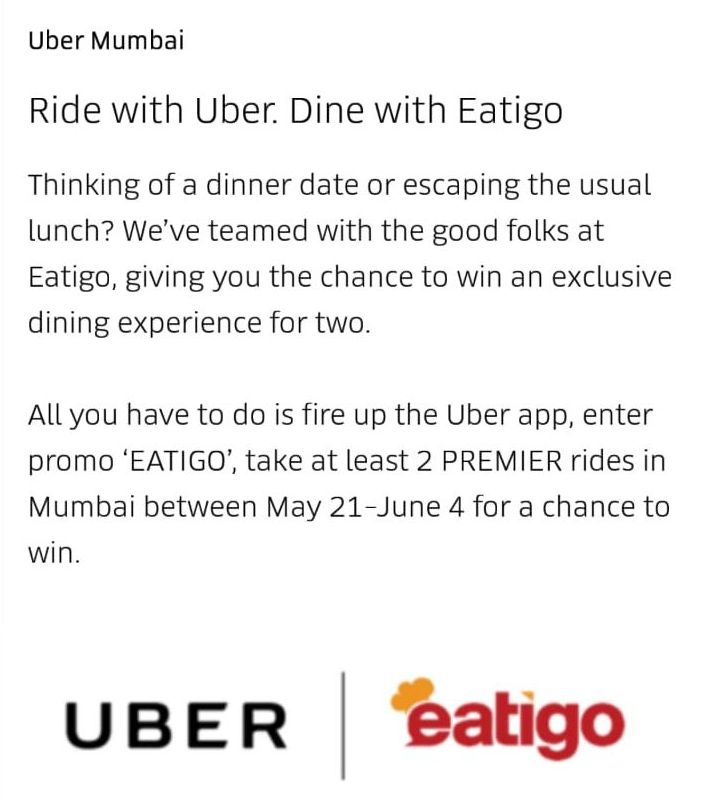Targeted offers have become famous.

That’s not to say they’ve become popular – brand managers report low conversion rates of offers made to offers redeemed.
There are many reasons for this problem such as the ones I covered in Walking The Tightrope Between Driving Repeat Purchase And Rewarding Loyalty and How To Fulfill Targeted Offers To Hear More Ka-Chings!.
In this post, I’ll focus exclusively on one of the chief reasons for low redemption: Low monetary value of targeted offers compared to the effort required to redeem them.
Let me give a couple of examples of targeted offers with low monetary value.
#1. ICICIDIRECT
I recently got the following targeted offer from ICICIdirect, India’s largest e-brokerage:

It’s not easy to estimate the value of brokerage since it’s reported only after a trade is executed. So, I won’t be surprised if this targeted offer has a low conversion rate.
#2. STAR BAZAAR
This targeted offer was made by the leading retailer Star Bazaar, a joint venture of Tata Group of India and Tesco of UK.

This targeted offer is unappealing for more reasons than one:
- For most consumers, an INR 50 income against an INR 1443 expense would sound like a raw deal
- Of the remaining consumers, not sure how many would be motivated by a paltry INR 50 gift to take the trouble of keeping a running tally of their shopping to know if they’ve crossed this odd figure of INR 1443.
Again, I won’t be surprised if this targeted offer converted poorly.
The easiest way to boost the appeal of this targeted offer is to increase the value of the gift manifold (after, of course, rounding off the spend amount to a sensible figure like INR 1500).
But I’m sure that would not be possible in retail.
If I were to talk to Star Bazaar’s CMO, I can imagine that they’d balk at my suggestion: “As a retailer, our margins are wafer thin. We can’t give away more than INR 50”.
Fair point.
To break this stalemate, brand managers need to be able to raise the monetary appeal of their targeted offers substantially without raising the value of gifts by much.
There are three ways by which they can accomplish that goal:
 Switch the gift from a giveaway to a sweepstake. The higher value of the prize will bolster the targeted offer’s appeal manifold. The discount restaurant reservation app Eatigo recently did a joint campaign with Uber. The gift was a chance to win a Dinner for Two at a 5 star hotel in return for taking two Uber Premier rides.
Switch the gift from a giveaway to a sweepstake. The higher value of the prize will bolster the targeted offer’s appeal manifold. The discount restaurant reservation app Eatigo recently did a joint campaign with Uber. The gift was a chance to win a Dinner for Two at a 5 star hotel in return for taking two Uber Premier rides.- Use leverage to increased the gift’s perceived value. Government programs in India use this principle very effectively, using insurance as the lever e.g. Pradhan Mantri Suraksha Bima Yojana, where a premium of INR 12 (18¢ US) provides enrolled citizens an accident insurance coverage of INR 2 lakh (US$3,000). As you can see, a small gift value can be used as premium to buy a large insurance policy.
 Pay out the gift in the form of cryptocoins. Consumers tend to perceive cryptocurrencies as potential multibaggers. The Japanese retailer Rakuten recently moved its US$ 9 billion loyalty program to an alt-coin called Rakuten Coin. So can other brands, as I highlighted in How Blockchain Can Crack The Holy Grail Of Loyalty Programs.
Pay out the gift in the form of cryptocoins. Consumers tend to perceive cryptocurrencies as potential multibaggers. The Japanese retailer Rakuten recently moved its US$ 9 billion loyalty program to an alt-coin called Rakuten Coin. So can other brands, as I highlighted in How Blockchain Can Crack The Holy Grail Of Loyalty Programs.
There could be many more ways to improve the conversion rate of targeted offers but the above list should provide a good enough starting point for brand managers to boost the appeal of targeted offers without breaking the bank.
(Full Disclosure: I’m a part owner of Eatigo India by way of seed investment in its holding company Ressy Technologies).
DISCLAIMER: The Blockchain world has an eclectic mix of elements like cryptocoin, ICO, and so on whose legal status is ambiguous and swings wildly between various states of the spectrum such as illegal, maybe-illegal, not-illegal and legal and from one country to another. Before following through with the guidance given in this post, please consult your legal counsel about their legal status in your respective jurisdiction. We offer no guarantees as to legality of any of the guidance provided in this post.


